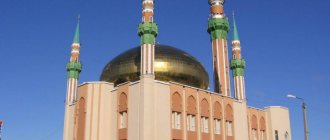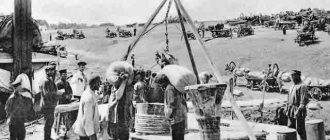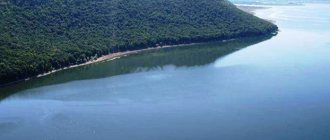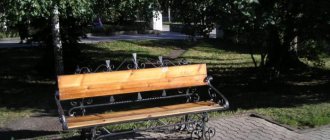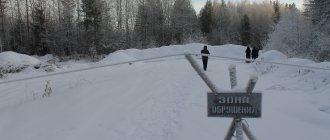Map of Yelabuga Republic of Tatarstan. Detailed characteristics of the city
Elabuga is a city in Russia, located in the northern part of the Republic of Tatarstan. An online map of Yelabuga shows that the city is an important transport and industrial hub of the Lower Kama region, specializing in the production of passenger cars (ElAZ plant). Elabuga is an ancient city with unique architecture and a 1000-year history that has included many events:
- 10-11 centuries - the appearance of an urban settlement at the confluence of the Toima River and the Kama;
- 11-12 centuries - construction of a white-stone fortress-mosque on the site of the ancient settlement;
- 1552 - annexation of the Kazan Khanate to Russia, renaming the settlement into the village of Trekhsvyatskoye;
- 1780 - Trekhsvyatskoye receives the status of a district town of Yelabuga, Vyatka province;
- 1850 - a fire that destroyed most of the wooden houses of the city and gave rise to the beginning of stone construction;
- 1850 - the first chemical plant was built in the city;
- 1940-1950s - discovery of large oil fields near the city;
- 1988 – opening of the Elabuga Passenger Car Plant (ElAZ).
The population of Elabuga is 74 thousand people. National composition of the population: Russians 52%, Tatars 43%, Chuvash 1%, Udmurts 1%, others 3%.
ELABUGA
ELABUGA, a city in Russia, in the northeast of Tatarstan, the center of the Elabuga district. Us. 74.0 thousand people (2019). E. is one of the centers of the urban agglomeration (approx. 950 thousand inhabitants), which also includes Naberezhnye Chelny and Nizhnekamsk located on the left bank of the Kama. Located near the confluence of the river. Toima in the river Kama (on the right bank), 14 km from the railway station. Tikhonovo.
Story
Elabuga. House-museum of I. I. Shishkin. Photo by A. I. Nagaev
Elabuga. Panorama of the city.
The city grew out of Russian. palace village Trekhsvyatskoe (from the 2nd half of the 16th century it was also called E.). All R. 17th century In the village, a fort with 6 towers, fortified by ramparts and a moat, was erected, and in 1707 a tree was built around it. defensive wall. In 1739 the village was besieged by the rebel Bashkirs led by A. Kusyumov, and in 1774–75 by peasant detachments during the Pugachev uprising. In 1780–96 it was a district town of the Vyatka governorate, in 1796–1920 – in the Vyatka province. From ser. 19th century developed as a shopping center (ship connections with Kazan and Perm). During the First World War of 1914–18, the city housed a camp for prisoners of war soldiers and officers of the countries of the Quadruple Alliance. On Nov. 1917 Soviet power was established in Yerevan. During the Civil war 1917–22, 7.9.1918, taken by the People's Army of the Committee of Members of the Constituent Assembly [at the beginning. Oct. 1918, due to the offensive of the Workers 'and Peasants' Red Army (RKKA), abandoned]. 05/3/1919 occupied by Kolchak’s army, recaptured by units of the Red Army on 5/26/1919. In 1921–28 the center of the Yelabuga canton of the Tatar ASSR, in 1928–30 as part of the Chelny canton of the Tatar ASSR, from 1930 the regional center of the Tatar ASSR (1930–90), the Tatar SSR (1990–92), from 1992 - the Republic of Tatarstan.
Archeology
To the southwest outskirts of E., opposite the mouth of the river. Toima, there is the Elabuga (Devil's) settlement with 3 lines of earthen ramparts and ditches (over 30,000 m2) and the famous stone tower of the Bulgarian era (part of a caravanserai or a white-stone mosque-fortress, built no later than the 2nd half of the 12th century .); there are materials from the Ananino culture and the Pyanobor culture of the early Iron Age, early Middle Ages, 11th – mid. 16th centuries
The remains of the Trinity Monastery, built in 1614–16, have been preserved. and the associated cemetery. In historical parts of E., between the Spassky Cathedral and the Intercession Church, were studied in the Middle Ages. Bulgar settlement that arose in the end. 10 – start 11th centuries, and Muslim. burial ground; in 1911 a treasure trove of silver items from the 11th–13th centuries was found. The Elabuga settlement and settlement are considered as a citadel and settlement of the Bulgar and Bulgaro-Tatar city of Alabuga, which was a cult and political one. center East Predkamya. To the southeast. outskirts of E., in the floodplain of the river. Toima, a number of settlements of the Prikazan culture of the Late Bronze Age were identified. Opposite them, at the former. village Ananyino, on the dune there are Neolithic and Bronze Age settlements and the Ananyinsky burial ground.
Architecture
Yelabuga settlement. Stone tower of the Bulgarian period.
E. was built up according to a regular plan (1784, modified in 1796 by architect F. M. Roslyakov; expanded in 1846). Temples were erected on three coastal squares - the high-rise dominants of the city, including the Pokrovskaya Church. (built by 1820) and Nikolskaya Church. (1808–18; rebuilt 1848–52). Ensemble Center. The square is formed by the buildings of the Spassky Cathedral (1808–1816, 1835; 5-tier bell tower, 1864), living room rows (1850–54, 1865–68), and the Chapel of St. Alexander Nevsky (1876–77). The appearance is historical. the city's environment is determined mainly by merchant construction of the 1st third 19 – beginning. 20th centuries: permanent houses and estates (Chernov, Stakheev, I. N. Kamashev-Sredny, etc.), civil buildings. institutions (formerly a district school - a women's gymnasium, 1858–60; Merchant Assembly, 1826–34, rebuilt in the 1860s; Fire Department and Police Department, 1878). Kazan-Bogoroditsky women's monastery. (founded in 1856 as a community, since 1868 - a monastery, closed in the 1920s, revived in 1995). Cathedral Mosque “Zhamig” (1992–99, architect F. Sh. Galiev).
Centers of science and culture
Elabuga Institute (branch) of the Kazan Federal University (founded in the late 19th century as the Diocesan Women's School; name and status changed several times; branch status since 2011; current name since 2015), branch of the Kazan Institute of Social and Humanitarian Studies knowledge (2005). Center. b-ka (1896). Elabuga State historical-architectural and artist museum-reserve (1980; current name since 1990), which includes the House-Museum of city native I. I. Shishkin, the House-Museum of M. I. Tsvetaeva, the Museum-Estate of N. A. Durova, the Museum of the History of E . and etc.
Farm
E. is the center of one of the oil-producing regions of Tatarstan; the oil and gas production departments "Prikamneft" (1958; in the structure) and the "Elabuga Drilling Operations Department" (branch "Tatneft-Burenie") are located in the city. There are: (production of bricks, tiles and other clay products), a school furniture factory, food industry enterprises: “Elabuga Meat Canning Plant”, “Alabuga Sote” (drinking milk and dairy products), “Essen Production AG” (mayonnaise, ketchup , sauces, jam, confectionery products).
On the territory of the Alabuga industrial site, 18 km north of the city, there operate the “Production Association “Elabuga Automobile Plant”” (1984, special equipment for the oil and gas industry, road construction, municipal and other types of special equipment) and “Zass Alabuga” (as part of the German Zass; household electrical appliances).
Most of the industrial enterprises are located in the special economic zone “Alabuga” (created in 2006) near the city. Among them, the main place is occupied by enterprises of the mechanical engineering complex and metalworking: Sollers Ford (diesel engines, light commercial vehicles), ST-Alabuga (buses, special equipment), MMK-Coskunoz-Alabuga (steel billets), Coskunoz Alabuga "(metal body parts; both are part of the Turkish Coşkunöz Holding), "Elabuga Battery Plant" (car batteries), "Interskol-Alabuga" (power tools).
The production of petrochemical and chemical products has been developed: thermal insulation materials (Rockwool-Volga), non-woven fabric (Polimatiz), plastic pipes (Design Rus), pipes with polyurethane foam insulation (Smith), plastic tableware (Khukhtamaki Foodservice Alabuga", as part of the Finnish Huhtamaki Group), polymer packaging (Danaflex), construction chemicals (TN-Alabuga), plant protection products (August-Alabuga).
The woodworking and pulp and paper industries are represented (MDF, chipboard and OSB panels) and “Hayat Kimya” (paper sanitary products; both as part of nehtwrjq “Hayat Hoding”), etc.
There are enterprises for the production of building materials "Trakya Glass Rus" (sheet glass), "Automotive Glass Alliance Rus" (automotive glass; both part of the Turkish "Şişecam"), "P-D Tatneft-Alabuga Steklovolokno" (fiberglass and products based on it basis), “Vertical Alabuga” (concrete), etc.
Elabuga on the map of Russia: geography, nature and climate
Yelabuga on the map of Russia is located in the Lower Kama region , on the right bank of the Kama River , in the north of the Republic of Tatarstan.
The city is part of the Naberezhnye Chelny agglomeration, from the center of which, Naberezhnye Chelny, it is located 35 km to the southeast. Distance to the regional center of Kazan – 200 km to the west
A map of the city of Elabuga shows that the area around the city is forest-steppe, and the city itself stands on the East European Plain, the relief is a stepped undulating plain with heights from 50 to 240 meters. The Vyatka, Toima and Tanayka rivers, which are tributaries of the Kama, also flow within the city.
The climate is temperate continental, with an average annual temperature of +4 degrees Celsius. Winter in the city is frosty, the average temperature in January is -11 degrees Celsius. Summer is hot and dry, the average temperature in July is +20 degrees Celsius. Approximately 500 mm of precipitation falls annually, which is distributed almost evenly across all months.
Map of the city of Elabuga with roads. Transport infrastructure
Elabuga is a significant transport hub of the Naberezhnye Chelny agglomeration, through which the federal highways M7 "Volga" Moscow - Vladimir - Nizhny Novgorod - Kazan - Ufa pass and includes the access road P320 Elabuga - Izhevsk.
From the city bus station, located on Okruzhny Highway, 15, buses depart to Kazan, Nizhnekamsk, Naberezhnye Chelny, Alemetyevsk, Ufa, Izhevsk and other cities.
The nearest large railway station is located in Naberezhnye Chelny, on Musa Jalil Avenue, 2, located 25 km southeast of the city on the satellite map of Yelabuga. The station provides train traffic in the directions Perm - Adler, Krugloye Pole - Moscow, Adler - Izhevsk; as well as electric trains in the directions Nizhnekamsk - Izhevsk.
Begishevo International Airport is located 41 km from Elabuga, in the Tukaevsky district of Tatarstan. The airport receives and sends aircraft to Moscow, St. Petersburg, Yekaterinburg, Mineralnye Vody, Antalya, Monastir (Tunisia) and other cities.
Regular passenger ships run through the Elabuga river pier Also, the city pier is one of the stopping points for river cruises on the routes Moscow - Kazan - Elabuga - Moscow, Nizhny Novgorod - Tchaikovsky - Nizhny Novgorod, Volgograd - Perm - Volgograd, Saratov - Perm - Saratov. The river pier is located on Shishkin Street.
Public transport in Elabuga is represented by 25 bus and minibus routes. The bus fleet is not in the best condition due to high wear and tear of vehicles. The cost of travel on city buses and minibuses is 18 rubles.
Sights of the city of Elabuga
- The house-museum of M. I. Tsvetaeva is a log house where the great poetess M. Tsvetaeva lived for 11 days, then committed suicide. The furnishings of that time have been completely restored here: a small bed, a couple of chairs, a chest, a wall mirror. The main thing has also been preserved – the poetess’s notebook. Address on the map: Elabuga, Malaya Pokrovskaya street, 20.
- Yelabuga State Museum-Reserve is a museum complex consisting of the house-museum of I. I. Shishkin, the museum-estate of N. A. Durova, the Museum of County Medicine named after. V. M. Bekhterev, the cultural center of M. I. Tsvetaeva and the city history museum. The latter features exhibitions on the history, ethnography, and archeology of the region with unique collections of ceramics. The main building of the museum complex is located on Gassara Street, 9.
- Memorial to the victims of political repression , located at the intersection of Govorova Street and Neftyanikov Avenue. Inside the stone fence of the memorial complex, a granite slab was installed with a list of Yelabuga residents executed during the years of repression, and a small carriage was built on which the repressed were transported.
- Monument to the samovar - the symbol of merchant Elabuga. It is a huge samovar cast from bronze on a bronze pedestal. Located in the very center of the city, on Lenin Square, closer to Neftchinikov Avenue and Gassar Street.
- The Elabuga “Devil’s” settlement is the remains of an ancient fortress located on a steep cliff near the mouth of the Toima River. Only the tower has survived to this day. The settlement is located in the southern part of Yelabuga, not far from the banks of the Kama and Toyma, 1 km from Mira Avenue.
- Spassky Cathedral is a unique five-domed temple in the classical style, built in 1816. Inside the building, wall paintings by artists Gunn, Brun and Vereshchagin have been preserved in some places. Location: Naberezhnaya street, 14.
Elabuga
Video: Yelabuga from above
Basic moments
The symbol of the city is the Tower of the Yelabuga settlement
. The historical center of Yelabuga is perhaps the best ensemble of a district town in Russia, distinguished by its amazing integrity and preservation.
On the southwestern outskirts of the modern city is the Elabuga (Chertovo) settlement - a fortified medieval settlement of the Bulgars, Kazan Tatars. Here in 1552, after the capture of Kazan, the Trinity Monastery was founded, which gave the foundation to the city. In the 17th century, the monastery was renamed Trekhsvyatsky, and in 1613 it was lowered from Yelabuga Mountain to the bank of the Tanayka River, then in 1707 the village and the monastery were surrounded by an earthen rampart, that is, they turned into a city. In 1780, by decree of Catherine II, the village of Trekhsvyatskoye became a district town and received a new name - Yelabuga.
Attractions
The Devil's Settlement is the only remnant of an ancient city of its kind that has survived from the times of ancient Volga Bulgaria. The fortress ramparts and ditches have been preserved here, but the main attraction of the settlement is the ruins of the Cathedral Mosque built in the 11th century. The mosque itself was preserved only at the foundation level, but there were five fortress towers around it. One of them has survived completely - the tower of the Devil's Settlement - the most beautiful and memorable place in Yelabuga.
Interesting examples of wooden architecture on the outskirts of the county town. Also among the most memorable buildings in Elabuga is a wooden fire tower (on a stone base). Elabuga churches deserve attention, for example, the Cathedral of the Savior Not Made by Hands, consecrated in 1821.
The house where Marina Tsvetaeva committed suicide in 1941
Marina Tsvetaeva, one of the most prominent figures in Silver Age literature, was evacuated to Yelabuga in August 1941. She lived in the city for only 11 days and on August 31, unable to withstand life’s circumstances, she committed suicide. There is a cultural center named after her here.
Ivan Shishkin, a landscape artist, on the contrary, was born in Yelabuga and spent his entire childhood and youth. The Shishkin Museum includes a house museum, an art gallery and a monument, which are located in the most picturesque place of the Elabuga district - on Naberezhnaya Street. The art gallery displays one of the artist's largest collections.
In addition, here you should definitely visit the “facade” of the current city: Memory Square with a memorial in honor of those killed in the Great Patriotic War and the adjacent Naberezhnaya Street. It offers a beautiful view of the Kama floodplain and the Devil's settlement with a tower on top.
Not far from the city is the Ananyinsky burial ground (8-3 centuries BC), opened in 1855 and marking the beginning of the definition of an entire era. Collections from the burial ground, which number more than 1,500 items, not counting fragments of vessels and beads, are kept in many museums not only in Russia, but also abroad.
Kupecheskaya Elabuga, st. Embankment, on the right is the bell tower of the Spassky Cathedral
Museums of Elabuga
Elabuga State Historical, Architectural and Art Museum-Reserve (Gassara St. 9; opening hours: 10:00-17:00, closed on Monday and the last Thursday of each month). Currently, on the territory of the museum-reserve there are more than 200 monuments of history, architecture, urban planning and decorative arts.
Mosque in Yelabuga
Museum of Local Lore of Yelabuga (Naberezhnaya St. 11; opening hours: 9:00-17:00, closed on Monday and the last Thursday of each month). The museum has an exhibition “Under the City Coat of Arms”, which is based on objects of Ananino culture, fragments of ceramics from the Bulgar period (12-14 centuries), weapons of the peasant war of 1773-1774, clothing and national jewelry of the Tatars, Russians, Udmurts, and Maris. The museum contains religious objects of Christians and Muslims, household items and tools telling about crafts in our region, furniture of the late 19th - early 20th centuries, products of industrial and chemical factories of the Ushkov dynasty, as well as theatrical accessories, musical instruments, photographs of famous people whose names are associated with the city.
Museum-Estate of N. A. Durova (Moskovskaya St. 123; opening hours: 9:00-17:00, weekends - Monday and the last Thursday of each month). The estate museum is located in the memorial house where the heroine of the Patriotic War of 1812 lived the last years of her life. The exhibition tells about the life of N. Durova. The museum displays military costumes of the regiments in which N. Durova served, as well as samples of weapons. Of particular interest is the correspondence between N. Durova and A. S. Pushkin and archival materials.
Memorial House-Museum of I. I. Shishkin (Naberezhnaya St. 12; opening hours: 10:00-18:00, closed on Monday). This is the only museum in the country dedicated to the famous landscape painter. Visitors find themselves in the atmosphere of Russian merchant life of the 19th century, in which Shishkin spent his childhood and youth. The museum's exposition consists of a memorial department and an art gallery. On the second floor there is the artist’s room and his workshop.
st. Spasskaya - in the center is the Spassky Cathedral
st. Gassara
st. Kazanskaya
st. Bolshaya Pokrovskaya
Fairs and festivals
The Spasskaya Fair, whose roots go back to the 19th century, is held annually in Yelabuga. The fair presents exclusively handmade products by craftsmen from different parts of Russia. In addition, the fair attracts tourists with performances by folklore groups, performers and puppeteers, as well as phaeton rides through the old quarters of the city.
The Bell Ringing Festival is also of interest to tourists: for example, in 2007, the administration of the Yelabuga region purchased 12 bells and a mobile belfry for the Spassky Cathedral in the city. From now on, during 3 festival days, residents of Elabuga and tourists can enjoy the ringing of bells.
How to get there
Getting to Yelabuga is quite difficult. The nearest railway station is Naberezhnye Chelny (one train per day, the journey takes 22 hours), from where minibuses and city buses go to Yelabuga.
The nearest airport is Begishevo (located near Naberezhnye Chelny), from there by bus to Naberezhnye Chelny or Nizhnekamsk - then by bus or minibus. You can also fly to Kazan International Airport, and from there by bus or taxi to Yelabuga.
It is more convenient to take a bus from Kazan or Izhevsk (the journey takes 4 hours), where trains from Moscow run more often.
The most romantic and picturesque way to get to Yelabuga is by boat on the Kama River, stopping under a steep ravine at the “Devil’s” settlement. In addition to tourist routes, pleasure boats from Nizhnekamsk call at the Elabuga pier, from which it takes a leisurely 15 minutes along the river to Elabuga. In addition, high-speed ships such as “Meteor” and “Raketa” sail from Chistopol and Kazan. The only drawback is that this type of transport is seasonal.
Map of Yelabuga with streets and houses
Main streets of Yelabuga:
- Chapaeva Street is a long (3.7 km) street in Yelabuga, connecting the Old and New Towns and passing north of the center. The highway starts from Moskovskaya Street and turns into a highway on the western outskirts of the city, leading to the settlements of Kolosovka, Lekarevo and others. Nearby to it on the map of Yelabuga with streets and houses you can find: SK "Central", bus station, traffic police and supermarket "Magnit". The buildings on Chapaeva Street are mostly private.
- Ave. Neftyanikov is the most important and longest (about 6 km) artery of the city. Neftyanikov Avenue on the map of Elabuga crosses the entire city from east to west and turns into Tanaevskoye Highway. On this street there are: the Muslim Cemetery, the Yelabuga Institute of KFU, the Samovar Monument and the Memorial to the Victims of Political Repression, the Museum of District Medicine named after. V. M. Bekhtereva, City Palace of Culture.
- Kazanskaya Street is a street in the Old Town, running parallel to Neftyanikov Avenue. Within walking distance from it are the Alexander Garden and Shishkinsky Ponds Park, the Museum of City History, Spassky and Intercession Cathedrals. The street is low-rise and its length is 4 km.
- Naberezhnye Chelny Highway is a long highway starting from the interchange at Okruzhnoe Highway and Baki Urmanche Street in the north of the city. The highway passes through the private sector, the German and Peter and Paul cemeteries, a pine forest and turns into the M7 Volga federal highway. The length of the highway is 12 km.
News in Elabuga
The “Alabuga Skills” competition in Yelabuga has reached the republican level. On February 7, the “Alabuga Skills” competition* started in Yelabuga. Within its framework, more than 200 representatives of workers and engineering professions from all over the republic compete in skill, prove their professional suitability and have a chance to receive awards and rapid career advancement. Read about how “Alabuga Skills” will help satisfy the region’s talent shortage, about the emotions and expectations of the participants.
Increase the prestige of blue-collar professions
The professional skills competition in Yelabuga was initiated by the head of the Yelabuga municipal district Rustem Nuriev and organized jointly with the management of the Alabuga SEZ in 2022 in order to improve the status of blue-collar professions and attract youth interest in technical specialties, taking into account the shortage of personnel not only in the enterprises of the region, but and at resident factories of the special economic zone. For two years the competition was of a municipal nature, and this year the Alabuga Skills project reached the republican level thanks to the support of the President of the Republic of Tatarstan Rustam Nurgalievich Minnikhanov and the Minister of Industry and Trade of the Republic of Tatarstan Albert Anvarovich Karimov. Over the three years of its existence, the competition has gained significant momentum. If in 2022 specialists competed in 9 nominations, now there are already 20 of them. The number of participants has also increased, from 40 in 2020 to 200 this year. The main goal of the competition is to increase the prestige of blue-collar professions and allow the best of the best to demonstrate their skills, exchange experiences and grow in their careers.
“Today, the problem of personnel in Tatarstan as a whole is very acute,” the head of the Elabuga municipal district Nuriev shares his opinion, “and we are very glad that this year there is an opportunity for professionals from factories throughout the republic to demonstrate their skills here, since it is important for specialists to share experience, identify the vector of further development.”
The competition is taking place at three venues at once - at the Elabuga Polytechnic College, an educational college and at the Progress driving school. Among the competencies in which participants compete are CNC turning, welding, milling and industrial robotics. And also industrial automation, electrical installation, laboratory chemical analysis, driving a truck and passenger bus, the ability to repair and paint cars.
“Here experience competes with youth, the achievements of the Soviet period compete with modern ones”
The jury consists of experts with many years of experience, many of them are certified as WorldSkills experts and have themselves participated in various professional skills competitions.
One of these accomplished specialists in the profession is Eldar Garashov, the main expert in three welding competencies. While still a student, he took second place in Tatarstan in the WorldSkills competition. Now he judges the contestants at “Alabuga Skills” and promises that the judging will be strict but fair.
“I think “Alabuga Skills” provides an opportunity to see how much the qualifications of specialists in a particular field have grown. The age of the participants varies - from 18 years old and without an upper threshold; in my category there is a participant who has turned 65. Here, experience competes with youth, the achievements of the Soviet period compete with modern ones, and this is interesting to watch. The most experienced is not always the most qualified, because technologies and methods of performing work are constantly being improved. It’s important to keep up with these changes,” explains Garashov.
He is confident that it is competitions like this that help create a community of professionals. Even at the preparation stage, while waiting for their turn, the contestants get to know each other, communicate, and after passing the tests they have the opportunity to discuss each other’s mistakes and findings, take them into account and use them in their work.
Another expert, Radik Akhmedeev, is a master of industrial training at the Naberezhnye Chelny Polytechnic College, and is a member of the expert jury of “Alabuga Skills” in the competence of CNC lathes. This is a challenging course; participants must demonstrate excellent skills in mastering the machine software.
They are given a drawing of a part, to create which they must write a program. There are many subtleties in this work; you often have to make adjustments right during the manufacturing process of the part. Competitors are given three hours for the entire task, and at the end the expert will check how well the resulting part corresponds to the drawings.
Accuracy in completing a task is an important criterion when assessing the results of Alabuga Skills participants in almost all competencies. This also applies to driving. At the Progress driving school training ground, site acceptance expert Oleg Kolchin observes the execution of exercises on KAMAZ trucks. Its task is to assess how correctly the drivers drove the “snake”, whether the chips were hit when entering the pit, whether the parallel parking was done correctly.
“On the first day, 10 participants with category C compete here, and on the second another 12, already with category D. Drivers have the opportunity to observe the performance of tasks by their competitors and take into account their shortcomings. In this qualification, both the angle at which the car enters the “snake” turn and the point from which it enters the parking lot are important. The more accurately and quickly the platform is passed, the greater the chance of winning. But knowledge of traffic rules is also assessed, without it you can’t go anywhere,” explains Kolchin.
The most technologically advanced competitions in competencies turned out to be at the third point - in the educational one. They are supervised by the head of the educational cluster of the Alabuga SEZ, Elvira Fomina.
“In the case of our location, the competencies taught at the Elabuga Polytechnic College were taken as a basis. This is our network partner; we, as employers, organize a secondary vocational education program with them. At Alabuga Polytech, students compete in such competencies as electrical installation, industrial automation and robotics, and laboratory chemical analysis. For us, the competition is also an opportunity to evaluate how the level of education we provide here can be compared with the level of experienced professionals from industrial enterprises of the republic,” says Fomina.
This year Alabuga Polytech will accept about 80 people in all competencies.
“It is important for me to develop in the profession that I have chosen for myself”
All 200 participants of the Alabuga Skills competition were selected at their enterprises as the best of the best. Everyone wants to show great results. But the level of the event is so high that even workers with extensive experience are nervous when going through their tests.
For example, Denis Chernyshev is a driver in category C with 10 years of experience, an employee of AMMONIY JSC. He handled the theoretical part easily, but in practice he became nervous.
“I don’t know yet what the results will be after passing the site, I had some minor difficulties at the start, but I hope they won’t have too much of an impact on the final result. I really want to be among the top three,” shares Denis.
But 21-year-old Maxim Kozhemanov, one of the youngest competitors, is focused solely on winning and does not feel much excitement. Perhaps the whole point is that Maxim has a victory at the Russian WorldSkills movement championship behind him. Maxim is an employee of the Naberezhnye Chelny Polytechnic College. In Yelabuga he competes in the “Welding with non-consumable electrodes in a shielding gas” competency.
“If it is possible to get the best result, you need to make an effort to achieve it,” the young man states decisively. — It is important for me to develop in the profession that I have chosen for myself. Both the WorldSkills movement and today’s professional skills competition are excellent ways to deepen knowledge, understand how other specialists work, and what exactly you can improve your skills in.”
Aleksandr Alekseev, a universal turner from the Nizhnekamsk Mechanical Plant, cannot boast of such experience as Maxim’s - he is competing at the republican level for the first time, and until now he has only competed at his native enterprise. However, largely thanks to local competitions, the turners were noticed and offered to reach a new level - to try their hand at Alabuga Skills. Alexander decided not to miss this chance, because this is a great opportunity to declare himself as a professional and get a promotion at the plant.
Grow to the federal level
Summing up the results of the professional skills competition “Alabuga Skills” will take place on February 10, awards for 2nd and 3rd places will be solemnly presented on February 11 at the city palace of culture, and the winners will receive prizes from the hands of the President of the Republic of Tatarstan Minnikhanov on February 18 at the board of the Ministry of Industry and trade RT.
“Alabuga Skills” is a competition that is designed to popularize blue-collar professions, identify the best of the best, and create support for training a new generation of masters in various specialties.
“One of the features of the Yelabuga municipal district is the bright events that are held here every year. This includes the Spasskaya Fair, the Bell Ringing Festival and Boris Berezovsky's Summer Evenings. I think we have added another excellent event to the traditional collection,” said the head of the district, Nuriev. — In the future, it may well grow to a federal scale. We will work on this. I am confident that next year the number of participants and competencies assessed will increase significantly.”
Economy and industry of Elabuga
The city's industry is represented by many large and small enterprises, which are indicated on Yandex maps of Elabuga. Townspeople and residents of the region work in such industries as:
- Oil production;
- Passenger car plant "ElAZ";
- Household appliances plant;
- Meat processing plant,
- Dairy;
- Bakery.
Livestock farming is also well developed in the city and region. The products of local farmers are known not only in the republic, but also abroad. The active development of industry and agriculture is facilitated by the convenient geographical location of the settlement and excellent access roads.



